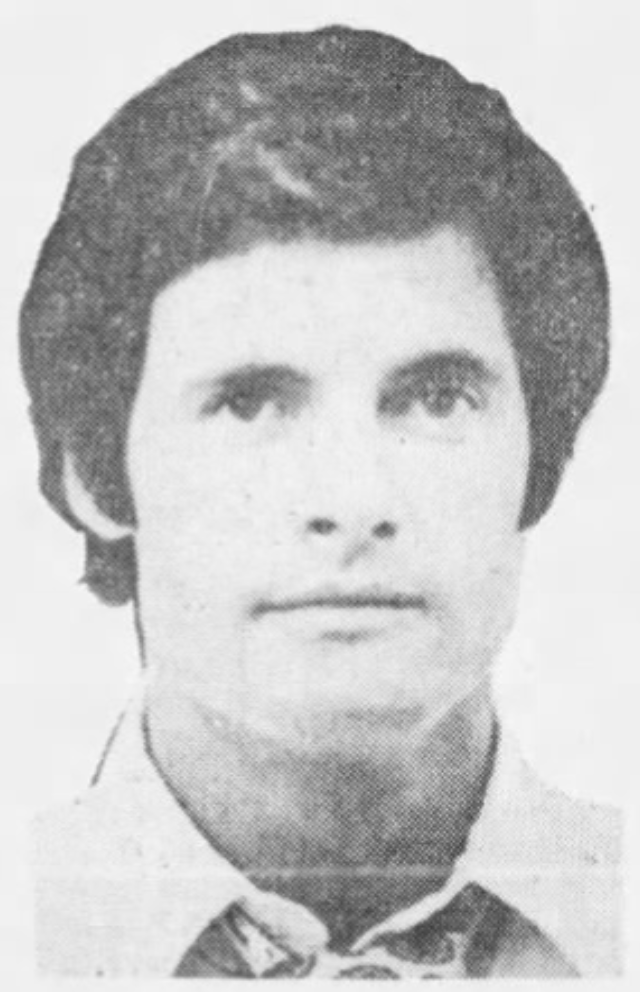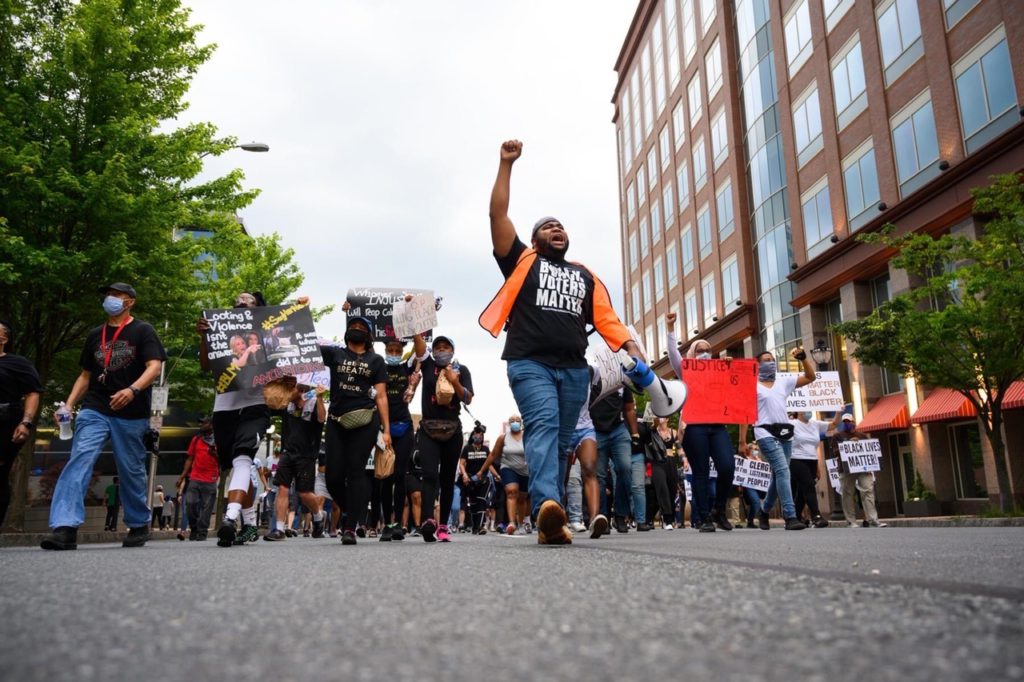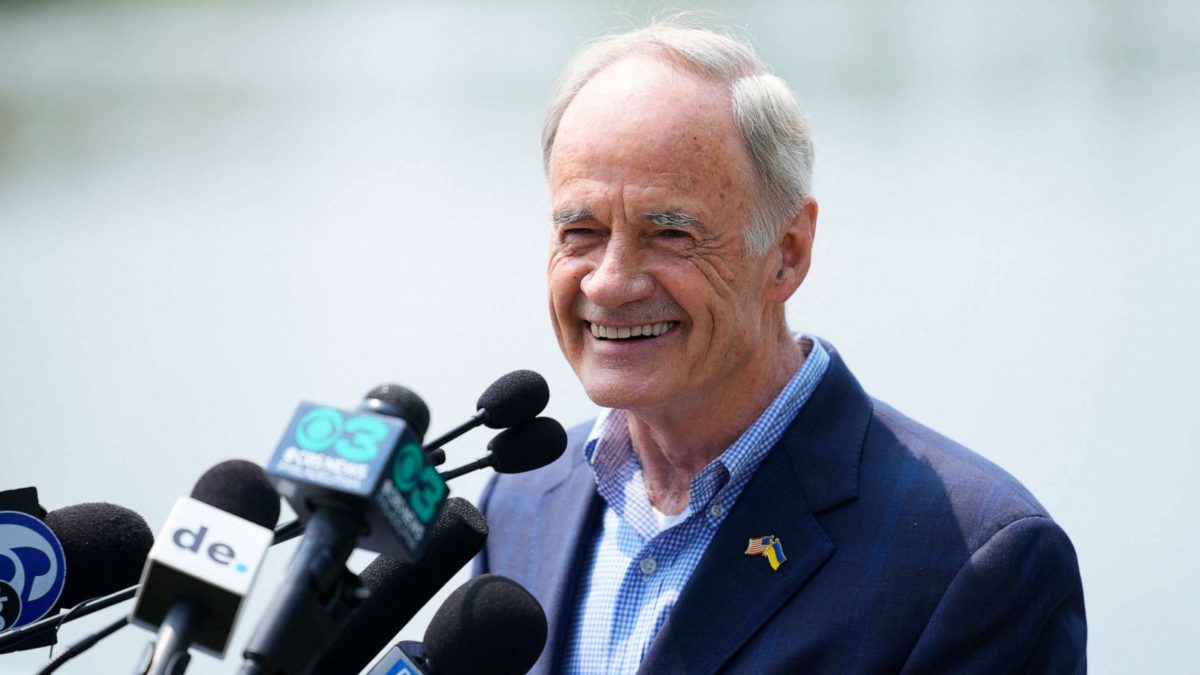On May 22, Tom Carper announced that he would retire from the US Senate at the end of his term. His exit in January of 2025 will mark almost 50 years in elected office — 50 years in which Carper became the face of the Delaware establishment. Nearly every major figure in the Delaware Democratic Party can be tied to Carper in some way, whether they worked in his administration, interned in his office, or staffed one of his campaigns.
Carper’s establishment bonafides go far beyond his personal connections. As Congressman, governor, and then as senator, he has racked up a record of moderate and conservative victories. As governor, he slashed tax rates, rolled back police transparency, and implemented welfare reform. As senator, he voted for the Iraq War, deregulated the banks, and opposed raising the minimum wage to $15 per hour.
With the well-earned moderate reputation that Carper holds now, it is difficult to remember a time when he was anything but king of the establishment. But he did not start out that way. Like many others in his generation, Tom Carper started out as an unconnected outsider, a West Virginia native who got his start supporting anti-war liberal upstart Eugene McCarthy in 1968 and joining a deluge of young upstarts who shook up the Democratic Party in the 1970s.
The trajectory of Carper’s career is one that is recognizable in the story of many of the politicians in his era. These old reformers shook up the political system and created a new one that seemed to undermine the whole reason they got involved. In understanding how people like Carper went from young outsider to corporate establishment, we can get a better understanding of how we arrived where we are today and what the future might hold.
Baby Boomers Rising
In order to understand the political world that Tom Carper emerged into, we can look at Celia Cohen’s coverage in Only in Delaware:
The World War II generation led Delaware’s transformation from a sleepy backwater, dominated by conservative corporate interests above the canal and an even more conservative rural constituency below it, into a modern state. It was a day when barriers from segregation to political patronage to malapportionment were breached, giving rise to new bases of power.
Then came the backlash, national and local. It was a tumultuous time of assassination and riots, Vietnam and Watergate, a feeble economy and a generational divide.
Delaware’s local troubles mirrored many of the problems being seen nationally. As Black communities challenged segregation and Jim Crow, the establishment fought back. In the aftermath of the assassination of Martin Luther King Jr. in 1968, the National Guard was deployed to Wilmington, where they remained for nine months. The 1970s brought economic stagnation and a series of budget shortfalls that necessitated quick and messy fixes. And in 1975, Delaware saw two major teachers strikes followed a couple years later by a massive restructuring of Delaware’s education due to desegregation and bussing backlash.
Facing this challenge was a Democratic Party that looked a lot like it did nationwide: split between a reactionary, pro-segregationist rural south and a blue-collar, machine-driven north. Politics was often done by burly men that weren’t afraid to hide money away and take a swing at people who disagreed with them.
At this point, the baby boomer generation hadn’t really gotten a good foothold. But in 1972, many of the people who tried to elect liberal Democrats like Eugene McCarthy or Bobby Kennedy in 1968 successfully nominated George McGovern for president. Among this group were future New Democrats Gary Hart and Bill Clinton. That sea change was seen in Delaware as well, with young upstart Joe Biden winning a shock election for US Senate against J. Caleb Boggs, a well-known Republican.

Two years later in 1974, Nixon’s unpopularity prompted another huge upsurge in youth involvement in politics. In Delaware, that took the form of Jim Soles’ campaign for Congress. Soles was a political science professor who had only lived in Delaware for five years, but his connections with the university and liberal idealism (he promised he would one day run for office after RFK was assassinated) helped bring dozens of new young people into the political process. His campaign was managed by political newcomer Ed Freel, and a graduate student named Tom Carper was brought on to serve as a volunteer treasurer.
Tom Carper’s first brush with politics came when he was still in the Navy, when he and a few friends went to Capitol Hill. As his friends wandered off, he went to the Capitol building and ended up stumbling on to the House Judiciary Committee hearing for the Voting Rights Act of 1965. In 1968, he worked on the upstart campaign of Eugene McCarthy before heading to Vietnam as a naval officer. Upon his return from abroad, Carper enrolled at the University of Delaware in their MBA program.
While Soles did not go to Congress in 1974, a 29-year-old Carper ended up becoming State Treasurer in 1976. He had graduated after the campaign and went to work in the state’s economic development office. While he was connected with various politicos by that point, he was certainly not anointed. No one else bothered to file for the position, so he loaned himself $5000 to run and worked his ass off to win his first of 16 elections. His pitch? Youth and independence. It was not entirely clear what he stood for beyond that.
Watergate Babies
Tom Carper did not officially reach the US House until 1982, taking advantage of a scandal-ridden Republican incumbent, but the circumstances of his rise put him firmly within the class of Democratic politicians known as the Watergate Babies. Riding the wave of Republican backlash, these young upstarts were largely able to sweep into office without the backing of traditional party power brokers.
Once in office, this class of politicians generally supported a progressive slate of causes. They believed in civil rights, they opposed the Vietnam War, and they especially wanted more transparency and cleaner politics. But as much as they were reacting to the excesses of Nixon, they were also reacting to nastier parts of the slowly dissolving New Deal coalition.
Much of the dirtiest politics of the day was done by local Democratic committees that were often dominated by labor. Labor had been the driving force behind Hubert Humphrey’s victory in 1968, the AFL-CIO had been very vocal in continuing the Vietnam War, and this connection between the mob and certain unions was becoming more clear. Delaware was not exempt from this. Frank Sheeran, of The Irishman fame, was the president of Teamsters Local 326 in Wilmington until the late 1970s.
So when the Watergate Babies were fighting the special interests and backroom dealings that pervaded politics both locally and federally, they were fighting against a politics of bitter divisiveness and dirty tricks, but they were also often fighting against a more working-class, populist, and increasingly conservative base. Instead they advocated for an independent, maverick approach that advocated for clean, effective government.
What this generation did not have was a clear economic vision. These were not all the New Left radicals who had defined the 1960s through Black Power and socialist manifestos. Many of the Watergate Babies politicians were firmly middle class or upper class liberals who had come up in post-war prosperity, connected more to the board room than the trade union. While they had generally supported the Civil Rights Movement and the feminist movement to some extent, they were also overwhelmingly white and male. As Democrats, they generally supported more liberal fiscal policies, but the stagflation and urban crises of the 1970s began to challenge the Keynesianism that had defined the previous several decades. When a new generation of Republicans began to chart a new direction, the other party paid attention.
Building the Carper Machine
The story of Carper’s establishment rise begins with something that happened while he was in office, but had nothing to do with him. In 1981, the Delaware state legislature passed the Financial Center Development Act (FCDA), shepherded through by Governor Pete DuPont. By the end of his term, fourteen new banks had opened credit card divisions in Delaware. By the end of the century, Delaware’s banking industry expanded from 4,600 to 43,000 jobs, making up 10% of the workforce and 5% of state revenue, on top of the 25% of state revenue that came from the corporate franchise tax.
As state treasurer, Carper would help move this money around. More importantly, this move would set a blueprint for the next several decades of economic development in Delaware that Carper would ride to prosperity. Delaware was not unique in this move. In response to the economic crises of the 1970s, the federal government and many states cut regulations and slashed taxes in what became known as the neoliberal turn. It worked better in Delaware than most places. The FCDA actually created tens of thousands of jobs and, more importantly for the coming decades, tens of thousands of voters with a stake in corporate interests.

It is impossible to understand Carper’s trajectory without understanding that moderate, pro-corporate voter base. While Delaware had always been a moderate corporate state, the 1970s and 1980s saw a change in what that looked like on the ground. The well educated and civically engaged DuPont families of North Wilmington were joined by other white collar workers leaving into suburbs in the west and south of the county, driven by desegregation and vast new neighborhoods that were newly affordable for those with well-paying finance jobs.
These voters were not self-consciously reactionary like the rural Democrats that used to make up the party, but they were not fully liberal either. They supported strong schools, low taxes, and incentives for corporations to keep bringing in jobs like the ones created by the FCDA. Voters like these were popping up all over the country, but especially in Delaware, and they would happily vote for both Democrat Tom Carper and Republican Mike Castle, as over half the representative districts in the state did in 1984.
After moving to the US House in 1982, Carper continued to build his position in government throughout the decade. Still not fully ingratiated to the state party he had largely been working around since his first election, he began to make moves. In the late 1980s, long-time New Castle County Democratic Party chair Eugene Reed was under investigation from the Attorney General’s office for laundering campaign donations through a variety of sources. Carper, never a fan of Reed, recruited a new candidate to run against him. Over the following months, he organized his supporters across the county and swept hundreds of new people into local precinct seats and collectively they swept out much of the old establishment. Who was the new chair? Joseph Reardon, a DuPont chemist.
Disgruntled party members attempted to primary Carper in 1990, but a 90-to-10 victory in his favor solidified his position as the new establishment of the Democratic Party. In 1992, he was one half of the infamous “swap” where he swapped places with Mike Castle, who went to Congress as Carper became governor. For two politicians who shared so much of a vision and a base, the switch seemed natural. Voters gladly went along with it.
If It Ain’t Broke

It was fitting that Tom Carper became the first baby boomer governor in Delaware. In many ways, he was representative of where that generation stood politically in 1992. He was a member of the Democratic Leadership Conference, a firm New Democrat, and he thought of himself as a bit of an independent. Unremarkable in Congress, this new position allowed him to show what he was really made out of.
While he had been able to take over the state party, Carper was still not accountable to traditional Democratic constituencies. DLC types abhorred the corrupt party politics represented by someone like Eugene Reed, but they also thought that liberal interest groups were distorting the country’s politics. Shortly after taking office, “Impeach Carper” bumper stickers started popping up around the state as his veto of a prevailing wage bill enraged unions. Environmentalists were similarly outraged by his efforts to water down Delaware’s Coastal Zone Act to allow for more business investment.
Rather than collaborate with these groups, Carper was just continuing what seemed to have been working. Pay no mind to the deteriorating cities and growing inequality; Delaware’s banking industry was booming, the manufacturing sector was holding strong for the time being, and the state was finally able to reach a AAA credit rating for the first time ever. Voters seemed to be plenty happy as well, electing him governor with 66% of the vote, and re-electing him with 70%.
Instead of traditional liberalism, Carper’s reforms turned to more self-proclaimed meritocratic solutions. He pushed for education reform, introducing privately run charters and more extensive standardized testing. He pursued welfare reform to cut down on public dependency. He slashed taxes and expanded economic development programs to bring corporations like AstraZeneca to Delaware. Some of his moves were just outright conservative, such as decreasing transparency for police misconduct records or signing a bill declaring marriage to be between a man and a woman.
This role also allowed him to strengthen his position in the state party. Not relying on traditional systems of patronage, Carper brought in a new generation of political leaders who shared his largely corporate managerial mindset, lifting up figures from John Carney to Lisa Blunt Rochester to Delaware Secretary of State Jeffrey Bullock, who helped to solidify Delaware as the “corporate capital” of the United States.
At this point, the reformer spirit of the 1960s and 1970s had formed into something else. A desire for clean, independent, solution-focused politics, reacting to the failure of the Democratic Party during the Reagan years, had fully morphed into a politics of maintenance. The government’s job was not to push for big goals and change society, it was to continue along the path set by the neoliberal turn, managed by experts in a way that encouraged the growth and freedom of individuals and corporations working in a free market system.
Without a clear alternate economic vision at their core, politicians like Carper easily adapted the neoliberal turn as their own.
Still, Tom Carper was not done. Facing the end of his term-limited run as governor, he decided to challenge incumbent Sen. William Roth, five-term legend of the Senate who had authored the Reagan tax-cuts and created the Roth IRA, and easily beat him to become Delaware’s newest junior senator. In this role, Carper sealed his role as both a moderate and an establishment kingmaker. He voted for the Iraq War and bank deregulation as a new generation of political leaders passed through his office as staffers and interns.
However, as the 21st century has proceeded, the limitations of this style of politics has become more and more clear. The Iraq War turned into a costly and deadly quagmire. Banking deregulation led directly to the Great Recession and collapse of the housing market. And many of the proud accomplishments of the Castle/Carper economic development apparatus have begun to fade: DuPont and AstraZeneca have moved their headquarters, the GM and Chrysler plants have closed, and the last decade is riddled with private-public partnership failures. As Carper retires, the politics he represents is under more scrutiny than it has ever been.
The New Reformers

The story of Tom Carper is undoubtedly going to be a crucial part of understanding Delaware history. His arc and the pathway of politicians like him is also important if we want to understand what the future might bring us. Throughout the rise of this generation, other movements have sought to dislodge the corporate politics that Carper represented. In 1988, supporters of Jesse Jackson managed to win the day in a caucus that delivered New Castle County and much of Kent county to the firmly populist leader. In 2004, supporters of Howard Dean formed the Progressive Democrats for Delaware, which went on to support people like John Kowalko or Paul Baumbach who would fight back against the local establishment.
While these movements were not quite able to break through, we might be facing a different situation now. The last decade has brought a wave of new people into Democratic and left-leaning politics that has not been seen since the 60s and 70s. The new reformers of today came out of the Occupy and Black Lives Matter movements rather than the Civil Rights and Anti-War movements, and they were galvanized by Bernie Sanders rather than Eugene McCarthy.
When plotting out what the future might hold for these new reformers, and their attempts to rollback the neoliberal turn of Carper’s era, it’s important to look at the things that led the old reformers astray: what they’re against, what they’re for, what their base is, and what the pressures on them are.
The new reformers have major thing in common with the old reformers when it comes to what they’re fighting against: they are challenging an entrenched Democratic establishment. This establishment is a weird mix depending on where people are. Democratic moderates now include a lot more corporate and professional workers than they used to. However, there are still many elements of organized labor and Black urban machines that newcomers on the left have butted heads with extensively in the last decade. In Delaware, those forces have not been as opposed to new movements as we have seen in some larger states, but the potential conflict is still there.
A more notable difference between the old and new reformers is what they’re fighting for. The Baby Boomers came in promising clean government, ending the war in Vietnam, and strong civil rights. Raised in the post-WWII boom, they had very little populist streak beyond that. In contrast, Millennials and Gen Z came up during the Great Recession, the Occupy movement, and the Bernie Sanders campaign. Many young people more explicitly support wide-scale policies like Medicare for All, a Green New Deal, and student debt cancellation. The potential for a more transformative politics was forged in the crises of a new century.
Those same struggles also have determined what the base of the new reformers is. Much like the old reformers, there are many college-educated liberals in this new generation, but their status is quite different. Young college-educated people are much more likely to be downwardly-mobile, working low-wage jobs, and saddled with immense debt than they were fifty years ago.
Additionally, social advances means that this group is much more diverse in terms of race, gender, and class, leading to increasing alignment between demands for social and economic equality and broad support for redistributive policies. While the faces of the old reformers were largely white men from middle-class backgrounds, the faces of the new reformers look more like Alexandria Ocasio-Cortez and Cori Bush federally, or Madinah Wilson-Anton or DeShanna Neal locally, well-educated but rooted in working-class communities.
When it comes to the pressure that this generation will face, that we will have to see. Millennials and Gen Z have already had to face a recession, a pandemic, and several political crises, but the future of the economy is uncertain. While supply-side economics ruled in the 80s, bolder ideas around industrial policy and social democracy are increasingly in vogue in the 20s, which could push new politicians to take stands much different than what Carper. However, the intergenerational transfer of wealth has the potential to undermine that base by stopping the downward drift of some of the college-educated parts of the coalition.
Every generation has the opportunity to correct the mistakes of the previous one, but it also has the opportunity to make new mistakes that future generations will have to fix. The example of people like Tom Carper provides the new reformers a model of how to come in from the outside and transform a state and a party, but it also provides a warning of what happens when you are willing to simply go where the challenges of the day push you.
As a new chapter in Delaware opens up in 2024, it’s a lesson we should all be doing our best to learn.

